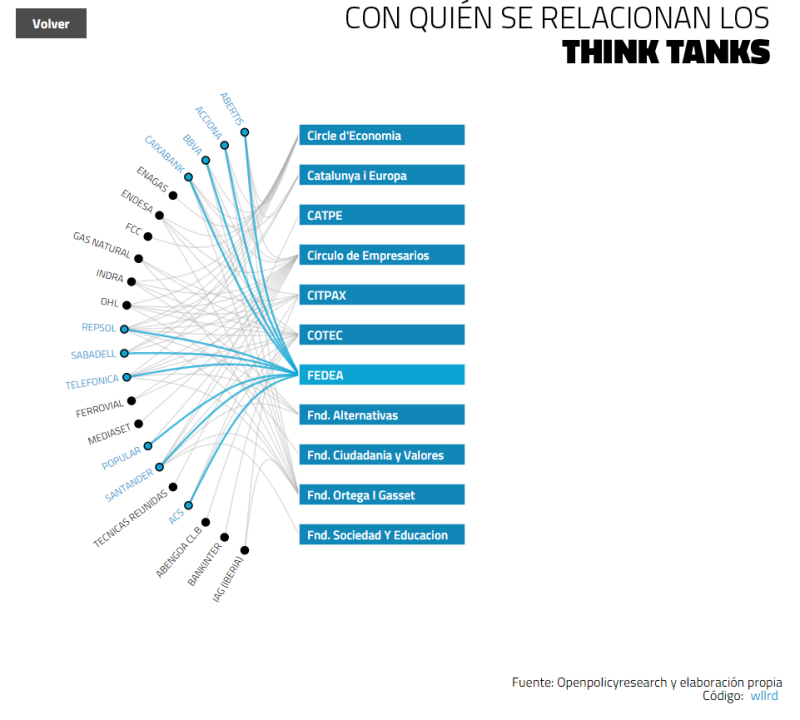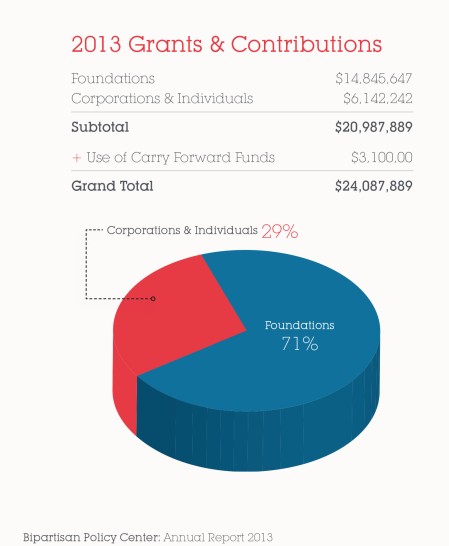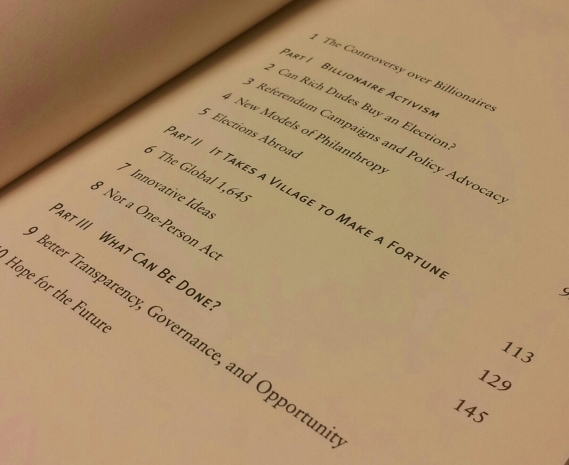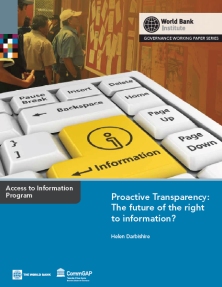This post is entirely written in Spanish. It contains some clarifications with regards to an article published in the Spanish online newspaper El Confidencial . The article features original research published in this blog on July 2015 about the links of corporations to think tanks in Spain.
Durante las últimas semanas he estado en contacto con Daniele Grasso, periodista de datos de El Confidencial, para preparar un reportaje que incluyera mis resultados sobre las relaciones de mecenazgo entre las empresas del IBEX 35 y los think tanks españoles. La idea era incluir una visualización interactiva que mejorara lo que yo había podido publicar por mis propios medios en este blog hace unas semanas. El reportaje ha salido hoy con el siguiente titular: ¿Cómo influir sobre el debate público? 22 empresas del Ibex financian 11 ‘think tanks’
Es un orgullo que tu trabajo aparezca como pieza central de un diario tan leído y agradezco a Daniele que se interesara por el proyecto. En este post voy a aprovechar para hacer algunas aclaraciones que, por cuestiones de espacio y tiempo, no se coligen del reportaje.
- La visualización está basada en esta hoja de cálculo que he generado visitando las webs de todas las organizaciones pertinentes, añadiendo indicadores que permitían hacer un análisis de clusters, etc.
- Por lo que respecta a los datos, lo más importante es que no son 11 think tanks, sino 12. Y es que falta Ecodes, el think tank que obtuvo la calificación máxima de 5 estrellas en el rating de transparencia que Francesc Ponsa y yo publicamos en el blog On Think Tanks en enero de este año. Ecodes es una fundación especializada en problemas de desarrollo y agua. Su buen trabajo les hace merecedores de importantes apoyos financieros de La Caixa, Ferrovial o Abertis, entre otros. Lo que es más importante: su caso es un recordatorio de que la presencia de financiación de grandes empresas no es condición suficiente para la falta de transparencia ni la presencia de intereses espurios.
- Según los datos de mi investigación, las empresas del IBEX están presentes en el 80% de los think tanks españoles. 12 de los 15 think tanks analizados tenían mecenas del IBEX 35. Hay muchos más think tanks, pero ninguno de los restantes publica sus fuentes de financiación.
- Con respecto a la metodología, hay que tener en cuenta un componente interpretativo no banal. La presencia en las webs de los think tanks de logos de empresas, fundaciones y universidades se ha interpretado como prueba de que esas organizaciones aportan fondos al think tank. En el caso de las universidades y las fundaciones, es fácil que se trate, más bien, de colaboraciones para proyectos específicos. En el caso de las grandes empresas la relación de patrocinio es la más probable. Pero puede haber errores.
La entrevista
Publico íntegramente las respuestas a las preguntas que me envió Daniele, demasiado largas para incluirlas en el reportaje.
– ¿Cuánto peso dirías que tienen, a día de hoy, los TT en España? ¿Consiguen tener impacto sobre las políticas? ¿Tienes algún caso práctico de ello?
En general, los think tanks en España no están muy desarrollados, aunque se trata de un campo en crecimiento. Hay algunas instituciones muy bien valoradas y relacionadas, como FRIDE y el Real Instituto Elcano, que trabajan en el ámbito de las Relaciones Internacionales y la política exterior. Sin embargo, son excepciones al panorama general.
La pregunta sobre el impacto es muy complicada. Es lo más difícil de medir y prácticamente imposible de probar, tanto en España como en Estados Unidos. Para que la propuesta de un think tank sea adoptada a corto plazo por un equipo de gobierno y aprobada por el poder legislativo se tienen que dar muchísimas circunstancias, es un milagro más que el funcionamiento general. Hay cierto consenso sobre la necesidad de considerar el impacto de los think tanks en términos de contribuciones, más que de aportaciones específicas. Además, a la hora de preguntarse si un think tank tiene influencia una de las cosas que hay que mirar independientemente de los resultados políticos, que son impredecibles, es si ha conseguido abrir un debate que antes no existía. Hay unos cuantos casos en España. Por ejemplo, el Círculo de Empresarios ha contribuido a poner en el mapa cuestiones como la privatización de monopolios estatales, que eran casi impensables antes de que ellos empezaran a estudiarlas. Y FEDEA, por poner otro ejemplo, lleva tiempo abogando por la implantación de un contrato laboral único. No están solos, pero son una de las voces más fuertes junto a Politikon, que yo empiezo a considerar un claro modelo de think tank digital independiente.
Por el momento, casi nadie les hace caso, pero es que el ciclo temporal estándar que se considera para que una nueva propuesta sea adoptada es de unos quince años. Es un plazo muy largo.
– Resulta claro que las grandes corporaciones quieren influir a través de los Think Tanks. ¿Cómo se manifiesta este tipo de influencia?
Las empresas españolas tienen una presencia estable y orgánica en varias fundaciones que funcionan como su brazo investigador. Algunas de ellas funcionan como asociaciones empresariales, realizan propuestas y estudios destinados a servir a sus asociados, representando sus intereses ante el aparato político. No hay nada malo en ello. Cuando vemos que se lanzan nuevas propuestas para el crecimiento de las pymes o el apoyo a la internacionalización, nos encontramos ante un trabajo de carácter altamente técnico que debe ser tomado en serio. Muchas grandes corporaciones forman parte de estas asociaciones, como es el caso de COTEC.
El caso de FEDEA es parecido, pero con matices. Aunque naciera bajo el auspicio del Banco de España hace ya 30 años, tenga un perfil más generalista y reclute a académicos de prestigio para sus investigaciones. Fedea no es “el think tank del IBEX35”, como se lee a veces en los periódicos; pero es cierto que está financiado por algunas de las empresas del IBEX y que aspira a convertirse en el think tank económico de referencia en España. De hecho, su página web publicita que se ha convertido en el interlocutor privilegiado con el FMI y la OCDE. Parece que su objetivo sea convertirse en los representantes de la ortodoxia técnica.
Más en general, aunque el mapa parece constatar que existe un interés por parte de muchas grandes corporaciones en aprovechar la persuasión blanda de los think tanks para ejercer su influencia sobre el mundo de la política hay que reparar en que muchas de estas empresas, como los antiguos monopolios estatales, han tenido siempre comunicación directa con la alta política y no necesitan a los think tanks. Su presencia en el mapa se puede deber a su peso incomparable en el mecenazgo privado, especialmente en el caso de los bancos. Haría falta investigar más para poder determinar la motivación detrás de los patrocinios que hemos observado.
– Sobre el papel, los Think Tanks debería ser fuentes de conocimiento y ‘expertise’ independientes (a menos que se trate de TT vinculados a partidos, claro). ¿Crees que, en España, la presencia de grandes empresas quita credibilidad al trabajo de los Think Tanks? ¿O quizás pese más la “mala imagen” que dan la relación entre determinados TT y partidos políticos?
El hecho de que muchas de las más grandes empresas españolas estén involucradas en la financiación de think tanks no solo es inevitable, sino que no debería ser negativo de por sí. De hecho, en el mapa se ve que las empresas del IBEX35 financian a las instituciones que les son más afines, pero también a think tanks más pequeños e independientes en una labor de mecenazgo que tiene el potencial de soportar la diversidad en el mercado de las ideas, aunque ahora mismo esté poco desarrollada en nuestro país.
Lo que sí resulta preocupante es que los dos modelos de think tanks predominantes en España, es decir, las fundaciones de partidos políticos y los think tanks empresariales como el Círculo de Empresarios, FEDEA o el Cercle d’Economia en Cataluña, estén afiliados a intereses específicos que suelen tender a la conservación y al elitismo, y no cuenten con un contrapeso suficiente en el espectro progresista. En este sentido la clave, más que en la credibilidad, está en la competencia. Yo no creo en la imparcialidad de los think tanks, algo que todavía se defiende en Estados Unidos, porque todo think tank tiene una ideología, unos valores y unos intereses, motivados tanto por su misión como por compromisos adquiridos con los patrocinadores, aunque luego puede funcionar autónomamente en la gestión diaria y en el trabajo de investigación. El problema es que las instituciones más conservadoras tienden a ser más populares entre quien tiene dinero disponible para financiar. Por eso es importante promover una mayor transparencia que permita conocer cuánto dinero se está moviendo en este ámbito, además de apoyar a instituciones más pequeñas para que puedan aumentar su impacto.
Actualización: Algunas de las aclaraciones se han eliminado tras haberse introducido modificaciones en el texto del reportaje.











